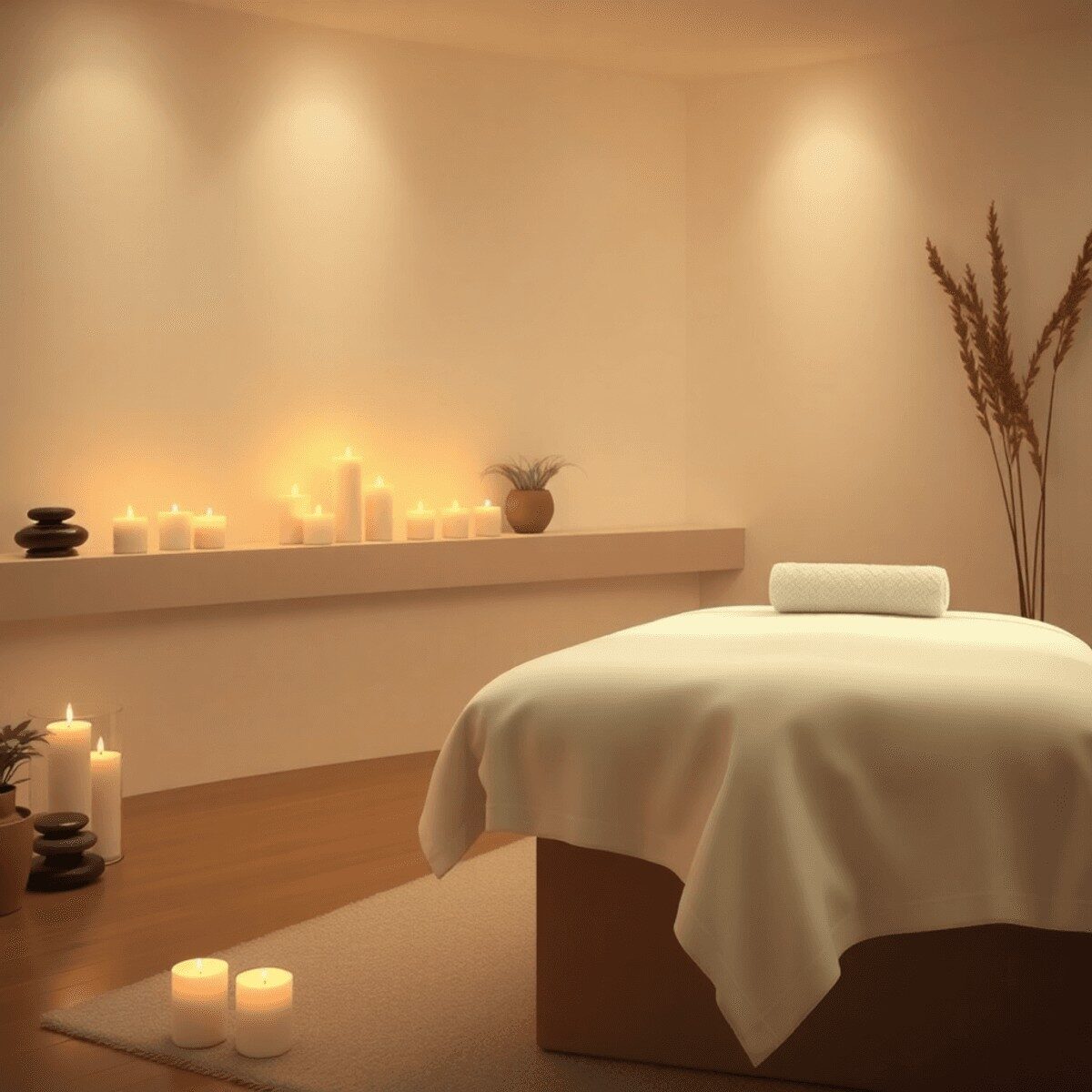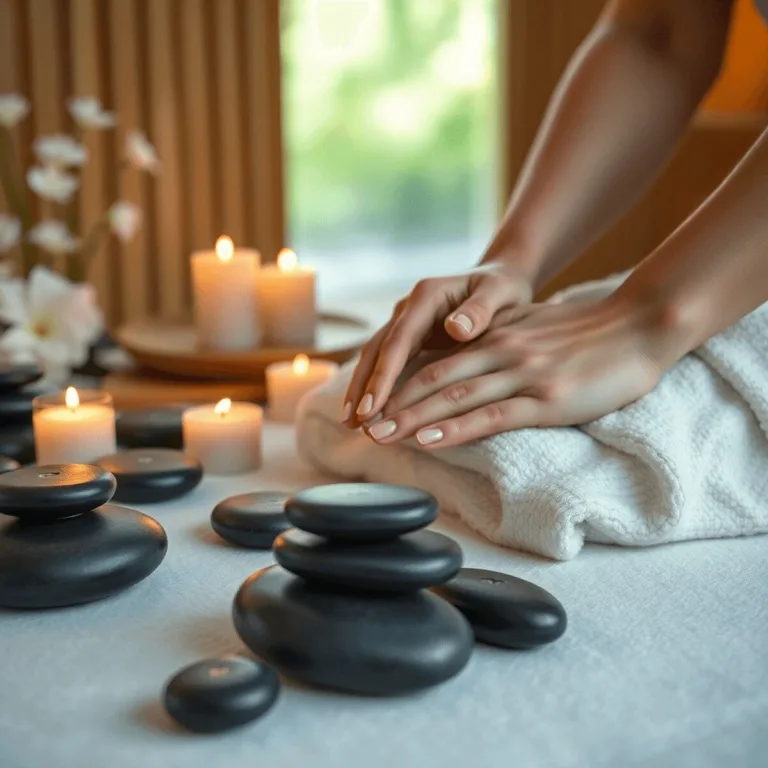Massage therapy is well known for its many physical and mental benefits. One key benefit is that it helps ease muscle tension and pain, which is especially useful for people who sit a lot or do repetitive tasks that strain certain muscles.
Physical Benefits
For example, office workers often have neck and shoulder pain from sitting too long. Regular massages can relax these tight muscles, improve posture, and lower the risk of long-term pain.
Mental Benefits
Massage also helps improve mental health. Getting a massage can release endorphins, the body’s natural feel-good chemicals, making you feel happy and relaxed. This is helpful for people dealing with stress, anxiety, or depression. Studies show that regular massages can reduce cortisol, the stress hormone, helping you feel calm and emotionally balanced.
Plus, the gentle touch of a skilled therapist creates a safe space to unwind, letting you break free from daily stress and reconnect with your body.
Key Points
- Massage therapy can help lower stress, improve blood flow, and ease muscle tightness.
- When picking a massage spa, check the therapists’ skills, the spa’s atmosphere, and the services they offer.
- There are different types of massages like Swedish, deep tissue, hot stone, and aromatherapy, each with its own benefits.
- During a massage, expect a calm and relaxing setting where the therapist uses different methods to meet your needs.
- Before your spa visit, drink lots of water, arrive early, and tell the staff about your preferences and any health issues.
How to Choose the Right Massage Spa
Picking the right massage spa is important for a good experience. Here are some things to think about:
- Reputation and Credentials: Check online reviews and feedback to see how good the service is. Choose spas with licensed and certified therapists, as this shows they are professional and follow industry rules.
- Ambiance: A calm and peaceful setting makes the experience better. When visiting spas, notice how clean and comfortable they are. A relaxing space with soft music, nice smells, and cozy furniture can help you feel more at ease during your massage.
- Services Offered: Ask about the types of massages available to see if they fit what you want. Some spas focus on certain styles, so find one that matches your needs.
Also, look at the spa’s website for details on services, prices, and any special deals.
Types of Massages
Massage therapy includes many different methods designed to meet various needs and preferences.
1. Swedish Massage
Swedish massage is one of the most common types. It uses long, smooth strokes to help you relax and boost blood flow. This massage is great for beginners or anyone wanting a gentle way to reduce stress and muscle tightness.
- It uses light to medium pressure, making it comfortable for those who want to relax without pain.
2. Deep Tissue Massage
Deep tissue massage works on deeper muscles and tissues using stronger pressure. It’s especially good for relieving long-term pain and helping muscles recover.
- Athletes often use deep tissue massage to ease soreness and improve flexibility.
3. Sports Massage
Sports massage is designed to prevent injuries and help athletes perform better by focusing on specific muscle groups used in different sports.
What to Expect During a Massage
Knowing what happens during a massage can help ease any worries you might have. Here’s what to expect:
|
Aspect What to Expect Environment |
Calm and peaceful setting |
|
Therapist |
Professional and respectful |
|
Communication |
|
|
Techniques |
Different pressures and strokes as needed, possibly including various types of massage |
|
Aftercare |
Tips for care at home, such as self lymphatic massage, and possible follow-ups |
When You Arrive
When you get to the spa, a receptionist will welcome you and help with check-in. You might fill out a health form so the therapist knows about any medical issues or problem areas.
Talking with Your Therapist
This info helps the therapist customize your massage. In the treatment room, you’ll talk about what you like, such as pressure levels, focus areas, or any past discomfort.
Getting Ready
After talking, you’ll be shown how to lie on the table, usually covered with a sheet or towel for comfort and privacy.
During the Massage
Speak up anytime if something feels uncomfortable or if you want pressure or techniques changed. The aim is for you to feel relaxed and refreshed.
After the Massage
Your therapist may give you tips for taking care of yourself afterward or suggest when to come back for another session.
How to Get Ready for Your Spa Day
Getting ready for your spa day can make it more enjoyable. Here are some simple tips:
Pick the Right Time
Choose a time for your appointment when you can relax afterward, avoiding busy days or times when you have other plans right after.
Get There Early
Arriving early helps you get used to the spa, enjoy things like saunas or lounges, and fill out any forms without rushing.
Drink Plenty of Water
Drinking water before your visit keeps your muscles hydrated and can make massages feel better.
Eat Lightly
Avoid heavy meals and too much caffeine before your appointment to feel comfortable. If you’re hungry, have a light snack.
Wear Easy Clothes
Wear comfortable clothes that are easy to change out of to make moving into your treatment easier.
How to Find the Best Massage Spa Nearby
Looking for Suggestions
Begin by asking friends or family for suggestions, as their personal experiences can help you learn about local options. You can also use websites like Yelp or Google Reviews to see what customers say and find popular spas nearby.
Finding the Right Spa
After you have a list of possible spas, spend some time checking their websites or social media to learn more about their services, prices, and any deals they offer. Many spas also share virtual tours or photos so you can get a sense of their atmosphere before choosing one.
Making a Smart Choice
If you can, call ahead to ask about the therapists’ qualifications or any treatments you want. Talking directly helps you pick a spa that meets your needs.
Tips to Enjoy Your Spa Visit More
Here are some easy ways to get the best from your spa visit:
- Talk with your therapist: Let your therapist know how you feel during the session. If the pressure is too strong or if you want more focus on a certain area, just say so. A good therapist will listen and adjust to what you need.
- Use spa facilities: Make use of any extras the spa offers, like saunas, steam rooms, or quiet lounges. These can help you relax more and get ready for your treatment.
- Relax afterward: After your session, take some time to chill out. Drink some herbal tea or sit quietly in a calm place to keep feeling relaxed longer.
Adding Regular Massages to Your Self-Care Routine
Incorporating regular massages into your self-care routine can significantly improve your body and mind over time. Establishing a schedule—such as once a month or every two weeks—can maintain muscle health and prevent tension build-up. Many individuals find that massages not only alleviate current pain but also serve as a preventive measure against future problems.
Viewing massage as an essential part of self-care, rather than just an occasional treat, can shift your focus towards prioritizing your well-being. You can enhance the benefits of massages by combining them with activities like yoga, meditation, or deep breathing. This holistic approach promotes relaxation and overall health. Making massage a regular habit fosters a deeper connection with your body and equips you to handle daily stress more effectively.
Trying Different Massage Types
If you’re interested in exploring various types of massages, consider a hot stone massage for stress relief or a hot oil massage that utilizes warm herbal oils for deep relaxation.
You might also want to try cupping therapy, which is recognized for its healing benefits and could be an excellent addition to your routine.
Other Personal Care Tips
In addition to massages, it’s important to consider other aspects of personal care such as hair removal. SHR hair removal is a modern technique that offers numerous advantages over traditional methods.
For an extra dose of relaxation, you might want to explore aromatherapy massages, which blend essential oils with massage for calming effects. Regular ear cleaning is also beneficial, particularly in managing ear wax buildup, which supports overall health.
Lastly, if you haven’t yet experienced full body massages or foot reflexology, they are definitely worth trying. These therapies not only provide relaxation but also offer unexpected health benefits.
By incorporating these practices into your routine and utilizing resources like Spa Insights, you can further enhance your self-care journey and achieve optimal well-being.
FAQs (Frequently Asked Questions)
What are the main benefits of massage therapy?
Massage therapy offers multiple benefits including relief from muscle tension and pain, reduction of stress, and improved blood circulation.
What types of massages are commonly available at spas?
Common types of massages include Swedish, deep tissue, hot stone, aromatherapy, and sports massages, each catering to different needs and preferences.
How do I choose the right massage spa for my needs?
When selecting a massage spa, consider the qualifications of the therapists, the ambiance of the spa, and the range of services offered to ensure a comfortable and effective experience.
What should I expect during a massage session?
During a massage, expect a peaceful environment where the therapist uses techniques tailored to your specific needs, maintains professional behavior, and communicates clearly about pressure and strokes. Aftercare recommendations may also be provided.
How can I prepare for my spa day to maximize benefits?
To prepare for your spa day, drink plenty of water beforehand, arrive early to relax before your session, and communicate any preferences or health concerns to your therapist.
Why are regular massages beneficial for long-term health?
Regular massages contribute to long-term physical health and emotional well-being by preventing tension buildup in muscles and promoting relaxation. Pairing massages with self-care practices enhances these benefits.



